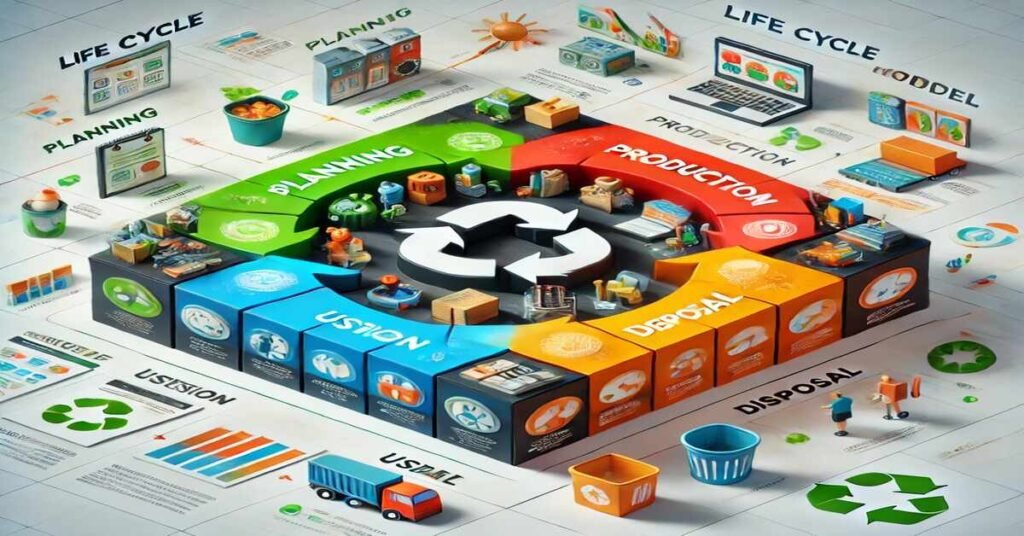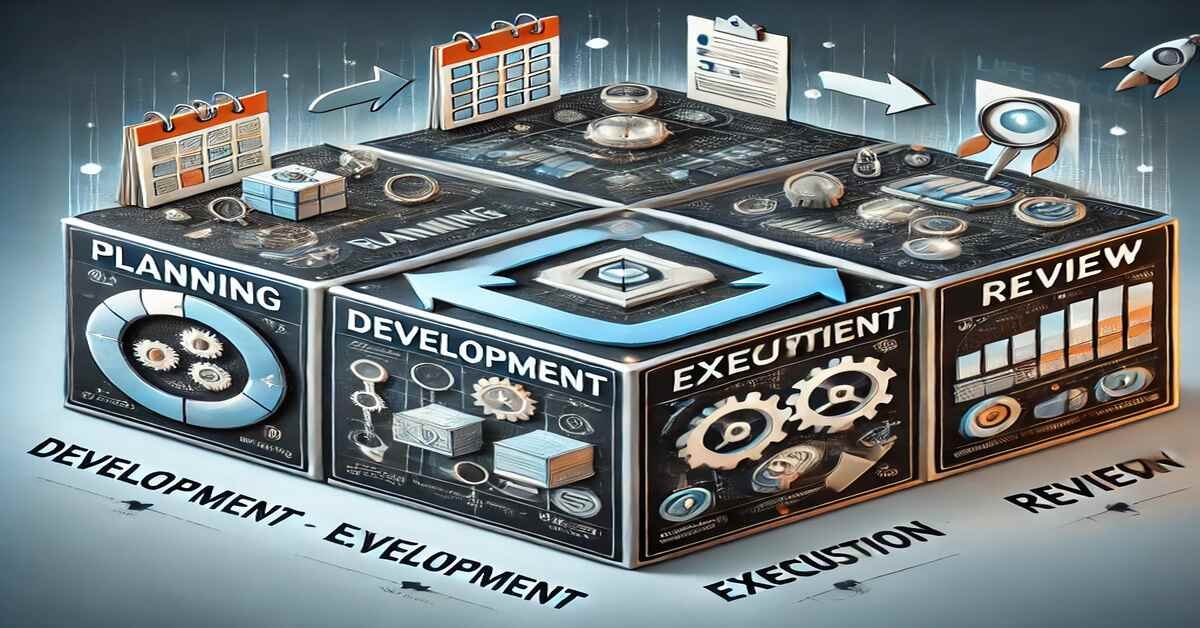The life cycle model four sided box offers a unique and simplified way to understand the stages of a product or system’s journey. This approach breaks down complex life cycle processes into four distinct phases, each represented by one side of the box. Whether managing a product, overseeing a project, or optimizing a business process, understanding the life cycle from this four-sided perspective can provide clarity and direction for your strategy.
In a traditional life cycle model, stages can feel overwhelming due to their complexity. However, the life cycle model four sided box offers a more streamlined view, making it easier to grasp and apply to various industries, from product development to sustainability. By focusing on four key elements, this model helps decision-makers stay aligned with core objectives while ensuring the system or product remains efficient and effective throughout its life span.
What is the Life Cycle Model Four Sided Box?
The life cycle model four sided box is a simple way to understand how products, systems, or projects move through different stages. Imagine a box with four sides, each representing a unique phase. These phases break down complex processes into smaller, easier-to-understand parts. By looking at things from this perspective, it’s much easier to manage, plan, and optimize each stage of the product or system’s journey.
Instead of thinking of a product’s life cycle as one long, confusing process, the four-sided box divides it into four main sections. Each side of the box focuses on a specific part of the process. This helps simplify the planning and decision-making needed at every stage, from the beginning to the end of a product’s life. Whether you’re working with a product, a project, or even a system, understanding this simple model can make your job easier and more efficient.
How the Life Cycle Model Four Sided Box Breaks Down Complex Processes
One of the key advantages of the life cycle model four sided box is how it makes complicated tasks much more manageable. Instead of managing everything simultaneously, you can focus on one side of the box at a time. Each side represents a critical part of the process, such as planning, production, usage, and disposal.

This clear breakdown allows you to track progress, identify potential problems, and confidently make decisions. For example, when managing a product, one side of the box might focus on designing the product, another on manufacturing, and another on customer use. The last side might deal with recycling or disposal. Separating these tasks makes staying organized and improving during each phase easier.
The four sided box model also helps identify opportunities for improvement in each stage. If one side of the box isn’t working well, it’s clear where changes are needed. This approach prevents confusion and ensures every part of the process gets the attention it deserves.
The Four Key Phases of the Life Cycle Model Four Sided Box Explained
The life cycle model four sided box divides a process into four distinct phases, making it easier to understand and manage. These phases are:
- Planning – The first side focuses on research, design, and planning. This is where ideas are born, and strategies are made.
- Development/Production – The second side involves creating and testing the product or service. This is where things are built or developed.
- Usage/Implementation – The third side is about using the product or service. It’s where the benefits are seen, and the product is implemented.
- End-of-Life/Disposal – The last side deals with how the product is discarded, recycled, or reused when it’s no longer needed.
Each phase builds on the last one, ensuring that the process flows smoothly from start to finish. You can easily track progress and adjust as needed by dividing the cycle into these four sides. This helps avoid problems and ensures the product or system lasts as long as possible.
Why the Life Cycle Model Four Sided Box is Revolutionizing Product Management
The life cycle model four sided box is transforming how businesses manage products. With the four sides clearly defined, companies can focus on each phase without getting overwhelmed. This method makes it easier for managers to keep track of every part of the product’s journey.
Before this model, it was common for businesses to focus only on the beginning or end of the product cycle, ignoring the middle stages. This often led to poor planning or missed opportunities. But with the four-sided approach, every phase gets the attention it deserves. This makes it possible to create better products and streamline the management process.
Businesses that use the four-sided box model often see efficiency, cost-effectiveness, and customer satisfaction improvements. By breaking things into simpler parts, companies can stay organized and make intelligent decisions at every stage.
Applying the Life Cycle Model Four Sided Box to Different Industries
The life cycle model four sided box can be applied to almost any industry, making it a versatile tool. Whether you’re in manufacturing, technology, or sustainability, this model offers a clear, structured way to manage processes. By dividing your work into four phases, staying on track and measuring success is easier.

In industries like manufacturing, the four sides could represent the stages of design, production, usage, and disposal. In the tech industry, the sides could focus on research, development, deployment, and support. Even in sustainability efforts, the four sides can be used to focus on resource extraction, production, consumption, and waste management.
Companies can enhance their productivity and optimize their workflows by applying this simple framework to different fields. The clarity offered by the four-sided box model helps businesses identify where improvements are needed and where resources should be allocated.
Real-World Examples of the Life Cycle Model Four Sided Box in Action
Many companies have successfully used the life cycle model four sided box to improve their operations. For example, Apple uses a similar approach to managing its products. They focus on the planning, production, customer use, and recycling or disposal of their devices. By applying the four-sided box, they can ensure each phase is handled properly and efficiently.
Another example is the construction industry, where the four-sided box manages building projects. The four phases in construction might include the design phase, the building process, the use of the building, and the demolition or repurposing of the structure once it reaches the end of its life.
These real-world examples show that the life cycle model four sided box can help businesses and industries of all kinds streamline their operations, minimize waste, and improve efficiency.
How to Use the Life Cycle Model Four-Sided Box for Project Optimization
Project management can be complicated, but the life cycle model four sided box makes it simpler. By breaking the project into four distinct stages, you can optimize each phase to ensure the entire project runs smoothly. This method helps teams focus on one task at a time, preventing confusion and ensuring deadlines are met.
Start by planning the project thoroughly. In the planning phase, gather all necessary information, set clear goals, and create a timeline. During the production phase, ensure that resources are used efficiently and that the team is on track. In the usage phase, track progress and make sure the project is being used as intended. Finally, in the disposal or completion phase, assess the project’s outcome and decide whether further action is needed.
Using the four-sided box model for project management allows for a clear overview, making managing time, resources, and efforts easier across the entire project.
The Benefits of Implementing a Life Cycle Model Four Sided Box for Sustainability
Sustainability has become a significant concern for many businesses, and the life cycle model four sided box can play a key role in helping companies go green. The model breaks down the product’s life cycle into four clear phases, each of which can be optimized to reduce environmental impact.
For example, in the planning phase, businesses can focus on using sustainable materials or minimizing waste. In the production phase, they can focus on energy-efficient processes and reducing carbon emissions. The usage phase can involve educating consumers on how to use products sustainably, and the final phase, disposal, can focus on recycling or reusing products instead of sending them to landfills.
By adopting the four-sided box model, companies can make more environmentally conscious decisions and reduce their carbon footprint. This benefits the planet and improves the company’s reputation and bottom line.
What Makes the Life Cycle Model Four Sided Box More Effective Than Traditional Models?
The life cycle model four sided box stands out because it simplifies a complex process. Traditional life cycle models can be overwhelming, with too many phases or steps to manage simultaneously. The four-sided box cuts through that complexity by focusing on four essential phases.
This approach makes it easier to focus on the most important aspects of the life cycle, ensuring that no stage is overlooked. It helps businesses stay organized, reduce waste, and improve efficiency. The clear structure of the four-sided box model also makes it easier to measure success and make improvements where needed.
In contrast to traditional models, which can be rigid or hard to understand, the four-sided box provides a flexible and easy-to-use framework that works across various industries and projects. This makes it a much more practical option for modern-day business needs.
You may Also intrested to Read About: Covatza3.9 Software
Understanding the Life Cycle Model Four Sided Box
If you’re new to the life cycle model four sided box, don’t worry! This simple model is easy to understand and can be applied to nearly every industry or system. By focusing on four main phases, it helps you manage processes with ease.
Start by considering the four sides as key stages in a project or product’s life. Whether launching a new product or managing a system, understanding the four phases—planning, production, usage, and disposal—will help you make better decisions and improve efficiency.
Once you understand the basics of the four-sided box model, you can start using it to optimize your workflow. As you gain experience, you’ll learn how to adjust the model to fit your specific needs, making it an invaluable tool for managing systems and products effectively.
Conclusion
In conclusion, the life cycle model four sided box is a simple but powerful tool that can help you understand and manage any product or system. Breaking down complex processes into four easy-to-understand phases—planning, production, usage, and disposal—makes everything much clearer. Whether in business, project management, or even sustainability, this model can help you stay organized and make smart decisions at each step.
This model is for more than just big companies; anyone can use it to improve their processes. With its clear and simple approach, the four-sided box helps you focus on what matters most in each phase. So, to simplify your work, reduce waste, and boost efficiency, try the life cycle model four-sided box. It could make a big difference in how you manage projects and products!






